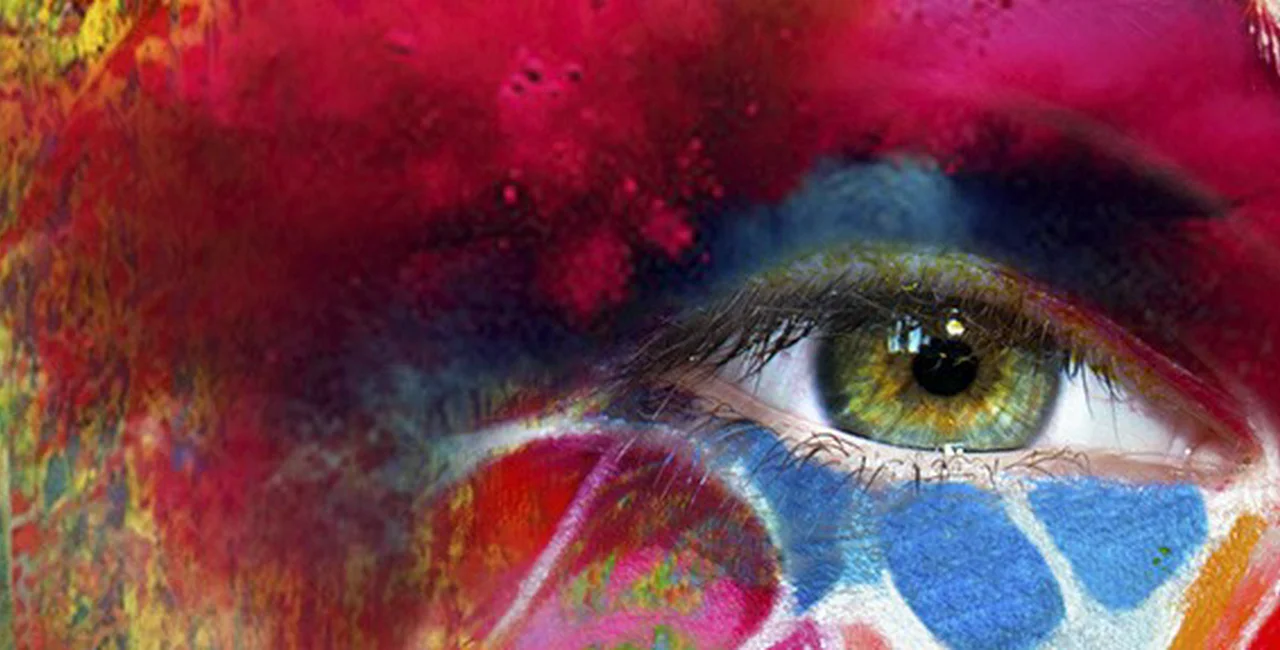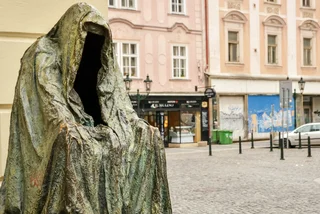
Hurry, hurry! If you haven´t been to Karolinum yet for the World Press Photo 08 exhibition, then fit it into your schedule before October 12. The exhibition is an absolute must-see. Prague is one of the select international cities to display the winners of the largest and most prestigious press photography contest in the world. But be prepared: just as a dose of international news coverage doesn´t exactly put skip in one´s step or foster blithe spirits, the photographs are overall a collective visual of the morose side of humanity.
This past February, the WPP jury reviewed the submissions of over 5000 professional press photographers representing publications such as National Geographic Magazine and Time magazine, as well as photographers from prestigious imagery agencies, like Getty Images, Noor, and Aurora Photos. The jury, a select team of esteemed photojournalists and media authorities from around the globe, reviewed over 80,500 digital photographs. Fifty-nine photographers from 23 countries were awarded recognition in the 2008 contest´s various categories.
One image shows rangers of Virunga National Park in the Congo carring the bodies of four mountain gorillas found shot in the forest, a highly endangered species with only about 700 remaining left in the entire world, (it requires roughly 20 men to carry one gorilla body). A little girl´s dress hangs on a dangerous-looking barbed wire fence after she has crossed the Israeli-Egyptain border with her family from Sudan. A wounded boy lay in the arms of a man in the village of Yaka China, in the Korengal Valley in northeastern Afghanistan. These are but a few of the images with a magnitude of visual impact that could move even the most aloof exhibition viewers.
Prague Prize Winner Carolyn Drake, an American documentary photographer based in Istanbul, captures misfortune on the individual level, with photographs such as a sleeping drug addict, hunched over in a shabby café, and the blackened hand of a miner that reveals a missing finger.
The exhibition is an overwhelming tour of the darker side of mankind, woven through the current state of affairs in numerous corners of the continents. Although the photographs reflect current events, they also encapsulate fundamental matters of human nature and survival. Tragedy, war, the brutality of mankind, and the meaning of borders are, unfortunately, timeless elements of human life that replay in a multitude of forms. The WPP 08 exhibition probes the question of whether or not it is these elements of mankind or just sensationalism that has multiplied in this day and age.
Of course, there is some recognition granted to art without the echo of the world´s tragedies, such as the Arts and Entertainment and Portrait prizewinners (check out the striking yet somehow ghostly portrait of Vladimir Putin), which balms the resonant glum of the exhibition in its entirety. And there are those photographs that simply elicit gasps and cringing, like Chris Detrick´s (US, The Salt Lake Tribune) Sports Action Stories selected photo of a basketball player gauging the eyes of an opponent.
Needless to say, the work is highly stimulating both from a general artistic perspective as well as the acute talent of the photojournalists to capture entire colossal issues in a single image. The rawness of the images, in their thread of global happenings and human-life, however, leaves an emotional (and philosophical) residue thick enough to coat over the appreciation of the photojournalism itself. Perhaps, though, that level of impact is the objective of the press photographers.
World Press Photo is an independent non-profit organization, founded in 1955 in Amsterdam, the Netherlands, where it is still headquartered today. According to the organization´s website, www.worldpressphoto.org, “World Press Photo is deeply concerned with stimulating developments in photojournalism and encouraging transfer of knowledge.”
Visit: www.wpppraha.cz

DOMÉSTICAS
Make it over to Leica Gallery to see Slovak documentary photographer Andrej Balco´s exhibition, DOMÉSTICAS, open through October 25.
With fast-growing recognition within Europe and abroad for his undeniable talent and unique style, Andrej Balco is a name to follow in the world of photography.
DOMÉSTICAS is a visual ensemble of Balco´s travels throughout Brazil, focusing on the inhabitants of upper-middle class households. The thematic elements are of socioeconomic inequality, an issue that has long-plagued this most populous Latin American country and still haunts contemporary life.
The exhibit is quite forceful in that each composition commands deep rumination, some more than others. Many of the pieces require a visual combing of all the components because of the particular positioning of the subjects and the “backstage” yet intentional points of significance. Two gardeners stand in an elaborate front yard, near a statue, while the main subject, the watchman, peers out from behind the bars of an iron gate. A statue of Jesus reaches over the scene from a cliff in the distance, small yet prominent against the sky, directly above the house.
In other compositions, there is a common thread in the positioning of the “domestic servants,” who stand straight and serious, looking out from behind some representational and literal border, such as a glass wall or a balcony railing, as the head of the household is positioned relaxed and aloof. The “Adriana, Andrea, and Eduardo” series is particularly captivating. In one photo, Adriana, the homeowner, lovingly nuzzles nose to nose with her dog, poolside, while her domestic servant, Eduardo, stands stiff and unnoticed by her, though only a meter away.
Animals and their connection to the men and women of the households play noteworthy roles in the pieces, and are just one of the thematic components that allows a margin of interpretation, as does the reappearance of figures of Jesus.
The photos replay the core topic in different forms, this cold divide between the human beings who share the same space, so vivid and so close, yet isolated from one another. A piano features a multitude of photographs with loving, family faces—sentimental to one part of the household, while merely cold frames to dust to another.
Although socioeconomic inequality in Brazil has improved since the launch of social welfare programs such as “bolsa familia” in 2003, the country is still a global chart-topper on the GINI index. But statistics don´t move us in the way images can; they aren´t human or emotional. What is important is the degree of humanization that Balco has achieved in the issue of polarized class divides. DOMÉSTICAS not only supplies a large dose of visual stimulation, but it also elicits contemplation and discussion.
LEICA GALLERY PRAGUE, p.b.c.
Address: Školská 28, Praha 1












 Reading time: 5 minutes
Reading time: 5 minutes 
























